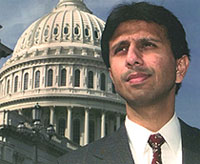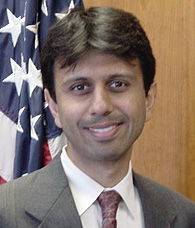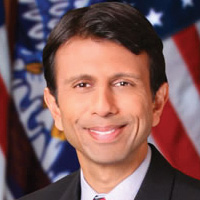Young Indian Politicians
 Youths; Politics; Indians-These are three terms that are usually not found together. To be a young Indian in politics, one needs three essential qualities: persistence, fearlessness and a great deal of ambition. The fact that Indians compose the wealthiest minority group in the United States, and yet receive very little political representation is disappointing. This nation needs more minorities in politics because America is a nation founded by immigrants and; therefore, all immigrant groups deserve equal representation. The main obstacle facing second generation Indians is that they do not receive much encouragement to enter the field of politics. It is thanks to few organizations such as IACPA (Indian American Center for Political Awareness) that young Indians receive the exposure and encouragement that they need such as the opportunity to intern in a Congressional office. This internship provides young Indians the chance to explore the world of politics, and how Congress functions on a day to day basis. It is also made possible with donors such as News India Times for providing the financial means for organizations such as IACPA to exist. Hopefully the future Congress of America will be more colorful and diverse than what exists currently.
Youths; Politics; Indians-These are three terms that are usually not found together. To be a young Indian in politics, one needs three essential qualities: persistence, fearlessness and a great deal of ambition. The fact that Indians compose the wealthiest minority group in the United States, and yet receive very little political representation is disappointing. This nation needs more minorities in politics because America is a nation founded by immigrants and; therefore, all immigrant groups deserve equal representation. The main obstacle facing second generation Indians is that they do not receive much encouragement to enter the field of politics. It is thanks to few organizations such as IACPA (Indian American Center for Political Awareness) that young Indians receive the exposure and encouragement that they need such as the opportunity to intern in a Congressional office. This internship provides young Indians the chance to explore the world of politics, and how Congress functions on a day to day basis. It is also made possible with donors such as News India Times for providing the financial means for organizations such as IACPA to exist. Hopefully the future Congress of America will be more colorful and diverse than what exists currently.
It is truly incredible that back in the 1950’s a Sikh man, by the name of Dilip Singh Saund, was able to become a Congressman in the U.S. Yet, in today’s society, as modernized as it is, there is such a lack of South Asian representatives on Capitol Hill. Indian youths need to first realize that voting is essential and necessary for all ethnic groups. The first step is encouraging young Indians to vote, and then helping them advance into the field of politics. Apathy is the biggest problem with this second generation, and needs to be confronted immediately. Of course it is not fair to generalize amongst all young Indian Americans because there are several young Indians passionate about politics and that do vote, but more youths should take an interest in this nation’s government.
Young Indian women are, especially, discouraged from entering the field of politics by several traditional Indian families. They face two challenges- first that they are a minority and second that they are female. However, this “Man’s World” needs to change because women represent half of the world’s population, and yet in the U.S. women compose less than fourteen percent of Congress. The belief that women are inferior leaders is a flawed misconception because natural born leaders exist in all ethnic groups and in both genders. However, this is a separate struggle that needs to be addressed as well.
This past summer I was fortunate to get a flavor of life on Capitol Hill. Attending meetings such as the “Transition of Sovereignty to Iraq” with Paul Wolfowitz and General Meyers, was remarkable and extremely informative. I also learned the entire process of how constituent mail works and the relationship between Congress members and their constituents. In addition, partaking in debates with fourteen ambitious Indian American students from around the country was thought provoking. We sat in a conference room for one week prior to the internship and one week following the internship. These discussions gave me a new perspective on what it means to be an Indian American and what are pertinent Indian American issues. However, the degree to which we disagreed surprised me because we were a relatively homogenous group. It proved how diverse opinions can be even within ethnic groups. However, towards the end of the internship we were able to come to a consensus more or less of what are the key issues that Indian Americans face today. I was also surprised with to see how I held such strong opinions about topics that I had never thought about prior to this summer such as what term I prefer to be referred to as- South Asian? Indian American? Indian? It was promising to see young Indians so passionate about politics and international relations.
 However, the most exhilarating aspect of this past summer was being able to visit India following this internship. IACPA selected six of the fifteen interns to go to India to study the Indian government. The purpose of this trip was for us interns to compare the relationship between the U.S. government and the Indian Parliament. We met with several public officials such as Sri L.K. Advani, head of the opposing party (B.J.P.) and J.N. Dixit, India’s National Security Advisor. Mr. Advani discussed his views on Michael Moore, author of “Stupid White Men” and director of Fahrenheit 911 as well as his views on President Bush. He even ended the meeting with an inspiring quote, “Be true to yourself and you will rise to your highest esteem.” This mantra is the best advice to give to any youth entering politics because morals and beliefs tend to get skewed and corrupted by politics.
However, the most exhilarating aspect of this past summer was being able to visit India following this internship. IACPA selected six of the fifteen interns to go to India to study the Indian government. The purpose of this trip was for us interns to compare the relationship between the U.S. government and the Indian Parliament. We met with several public officials such as Sri L.K. Advani, head of the opposing party (B.J.P.) and J.N. Dixit, India’s National Security Advisor. Mr. Advani discussed his views on Michael Moore, author of “Stupid White Men” and director of Fahrenheit 911 as well as his views on President Bush. He even ended the meeting with an inspiring quote, “Be true to yourself and you will rise to your highest esteem.” This mantra is the best advice to give to any youth entering politics because morals and beliefs tend to get skewed and corrupted by politics.
Upon first glance of how the Indian government operates, there were obvious similarities between the House of Representatives and the Lok Sabha(Indian House Gallery), as well as the Senate with the Raj Sabha(Indian Senate). The structure of the Indian Parliament is analogous to the U.S. Congress. These two democracies have several commonalities, and yet Indo-U.S. relations are not at the level that they should be. The focus of this trip was the idea that Indo-U.S. relations need to be enhanced because the U.S. is the strongest democracy, and India is the largest democracy with a population close to 1.2 billion people. Thus, India- U.S. relations are essential for both countries.
I am optimistic about an increase of young Indians entering the field of politics. It is even evident on a micro-level on college campuses across the country through South Asian Societies that promote cultural and political awareness of young South Asian Americans. Change is generally created by the younger generations, which is why if Indian Americans desire to receive greater representation, they will need to assert themselves in politics.






























